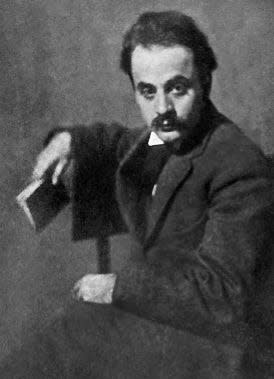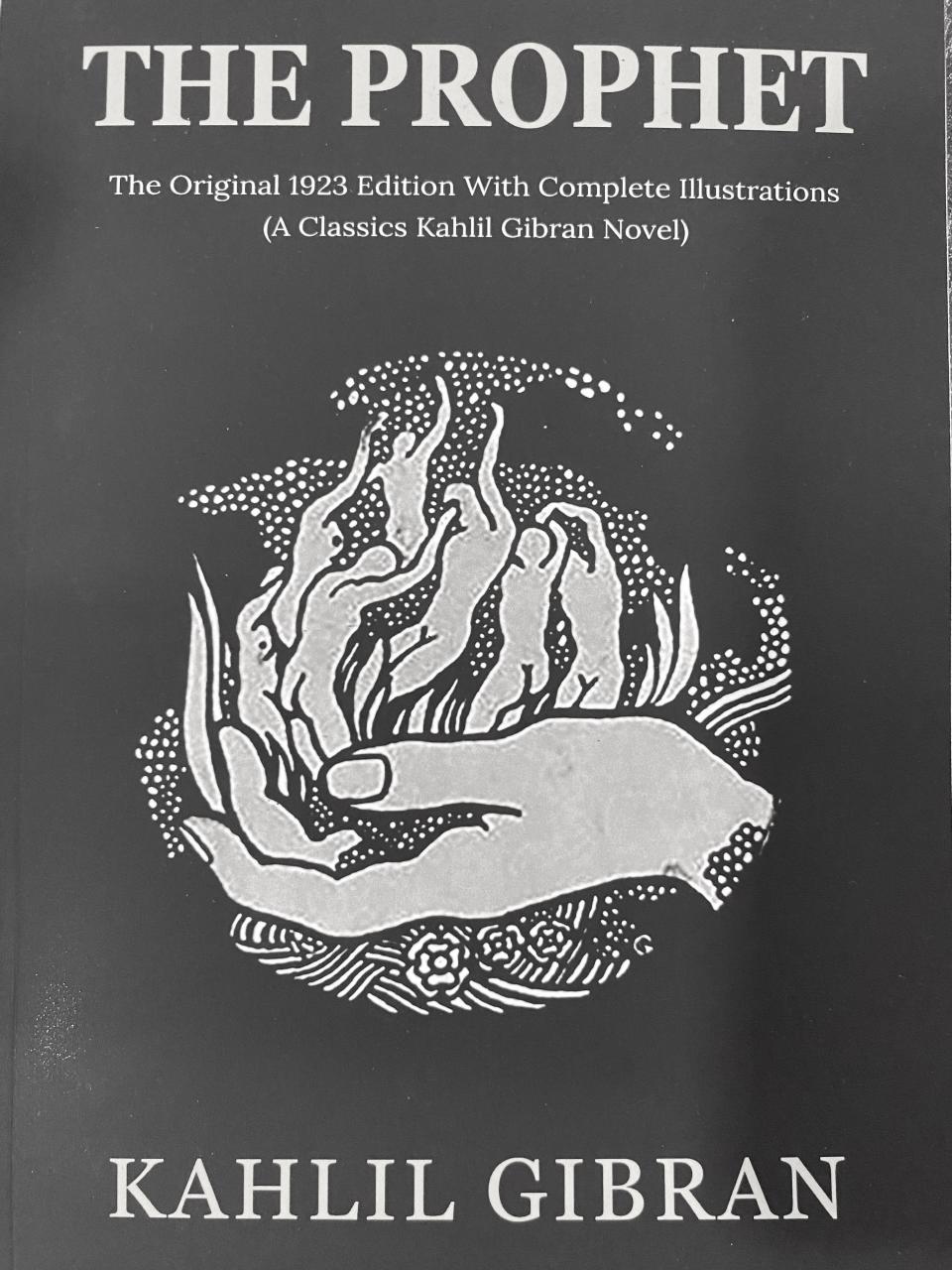Mystical and wise: 'The Prophet,' one of the most read books in history, turns 100
He is the third-most-widely read poet in history, after Shakespeare and Lao-tzu. He was a New Yorker and an Arab American. His writing has influenced song lyrics, novels and speeches, and inspired famous fans including Elvis, the Beatles and Johnny Cash.
Kahlil Gibran, the poet-philosopher-artist, has captivated generations of readers with his musings on life, love, freedom, family, death and nature. This month, Gibran is being celebrated as his most famous work, “The Prophet,” turns 100. A narrative tale of prose poetry, “The Prophet” has been translated into more than 120 languages and has been continuously in print since its release on Sept. 23, 1923.
Art exhibits, conferences and performances are being held around the globe to mark the occasion. A marble sculpture honoring Gibran and “The Prophet” will be unveiled later this year in the garden of St. Mark's Church in-the-Bowery in lower Manhattan, near where Gibran used to live.

Gibran’s writing is still treasured today because he speaks to people’s yearning for discovery, said Glen Kalem, founder of the Kahlil Gibran Collective, a nonprofit online platform dedicated to the author.
“There’s a deeper mysticism that is weaved into the text,” Kalem said. “If you are in the right moment needing some spiritual wisdom, it leads you to discovering things about yourself. What Gibran did so eloquently in ‘The Prophet’ is to give people a glimpse or a window into their greatest self.”
From Lebanon to New York
“The Prophet” tells the story of a wise man called Al Mustapha who, about to leave for his homeland, imparts his wisdom on the big questions of life in 26 fables. Gibran’s writing was inspired by his immigrant experience and religious traditions he encountered, including Sufi mysticism, Baha’i, Islam and the Maronite Catholic faith in which he was raised.
Born in Lebanon, Gibran grew up poor and did not receive a formal education. His father was jailed for embezzlement, and his mother moved the family to America in 1885. They traveled through Ellis Island before settling in Boston.
At school, a teacher noticed his artistic talent and introduced him to a photographer who became a mentor. Gibran later studied Arabic literature in Beirut and art in Paris. Returning to Boston, he met Mary Haskell, who became his longtime patron.
Moving to Greenwich Village in 1911, Gibran became part of a community of budding artists and writers. He lived near Manhattan’s “Little Syria,” a neighborhood for early Arab immigrants, and was president of the New York-based Arab writers’ group The Pen League.
He was an accomplished artist and prolific writer in Arabic and English, but “The Prophet” catapulted him to worldwide fame. His death in 1931 made front-page news.
The slim book of parables, illustrated with Gibran's drawings, became one of the all-time bestselling books. It’s an amazing feat for a book whose publisher never bothered to publicly advertise or market it, Kalem said.
The book’s success was carried by word of mouth, and it was often given as gifts, he said. In its collection, the Kahlil Gibran Collective has books with inscriptions that include “This book changed my life. I want it to change yours” and “For building castles in the sky.”
The collective also has an edition owned by Elvis Presley, with his notations on nearly every page, and a smartphone-size copy carried by World War II soldiers.
Entertainment: Hollywood has stereotyped Arabs for decades. Is it finally changing?
Diversity: Will Arab Americans finally be counted on the US census?
‘A better person for it’
Popular upon its release, “The Prophet” surged in popularity again in the 1960s, embraced as a book of the counterculture. It was spiritual, influenced by traditions of the East and West, but not tied to any one religion. It spoke about freedom and love. At its height, it was selling more than 400,000 copies a year, Kalem noted.
In 2014, "The Prophet" was adapted into an animated film, featuring Salma Hayak, Liam Neeson and John Krasinski. Hayek, who is of Lebanese descent, also produced the film.
Guillermo Perez-Santalla of North Bergen first read “The Prophet” as a teen in the 1970s, intrigued by its reputation and the fact that so many people had it on their home bookshelves. He was captivated by the humanistic messages and beautiful writing, he said.
“I think Kahlil Gibran had a very deep message of love and of true love and what love was all about,” Perez-Santalla said. “Love is something that we do and that we actively incorporate into our lives, and not the shallow love we see in Hollywood movies.”
For him, the impact has gone beyond the joy derived from words on pages.

“'The Prophet' gave me a basis of faith in other worlds and also faith in the good of people and searching for the good of people. I think it’s definitely a part of my personality. It had influence on my being,” said Perez-Santalla, who read aloud excerpts from the book on his blog.
“I think I’m a better person for it, that I look at people in a kinder way," he said. "To me, that and the New Testament are the two things that have influenced me most in my life — that whole theme of love and compassion and seeing people for who they are. All those things resonate in that book.”
Kalem, who founded the Kahlil Gibran Collective in 2012, said the language and tone of the book felt biblical and compared it to the chapters of the New Testament. To him, “The Prophet” was like a self-help book, guiding and helping him through a crossroads in his life. He wants to share that with others.
“I don’t think any great person or spiritual person ever taught anything else but love one another and respect one another,” Kalem said. “The inner points of who we are have always been there. Gibran was just another voice in the chain.”
The collective plans to unveil the monument for “The Prophet” centennial in November. Sculpted by Lebanese artist Rudy Rahme, it captures the drawing that Gibran made, titled "Hand of God," for the cover of his famed book.
Immigrant experience
For Arab Americans, Gibran’s legacy is a point of pride, shedding light on their history of immigration to the United States and their contributions to American society.
“He is representative not just of our Arab culture, but also of the Arab American experience, of the immigrant story,” said Samer Khalaf, a Paramus resident and former national president of the American Arab Anti-Discrimination Committee. “He came to this country and started from nowhere and ended up writing these incredible books, poems and literature. That makes the connection very poignant for Arab Americans.”
Despite his literary legacy, Khalaf said, Gibran is overlooked. A bid to have a Khalil Gibran postage stamp failed. The author is also largely absent from school curricula. Some view Gibran as "other" because of his immigrant background, Khalaf said. "He is not the usual Whitman or Thoreau, the European white type of poet,” he added.
Gibran is also misunderstood, he said. People assume “The Prophet” is religious and tied to Islam. Gibran was spiritual but did not follow one religion.
While Gibran writes of the immigrant experience and the alienation it can bring, he also speaks of relationships, love, ethical predicaments and how people should treat one another, Khalaf noted.
"He's not a novelist telling this long story that you pick up and read once," he said. "These are poems you can learn from and live by."
This article originally appeared on NorthJersey.com: Kahlil Gibran's 'The Prophet,' one of most read books in history, turns 100

